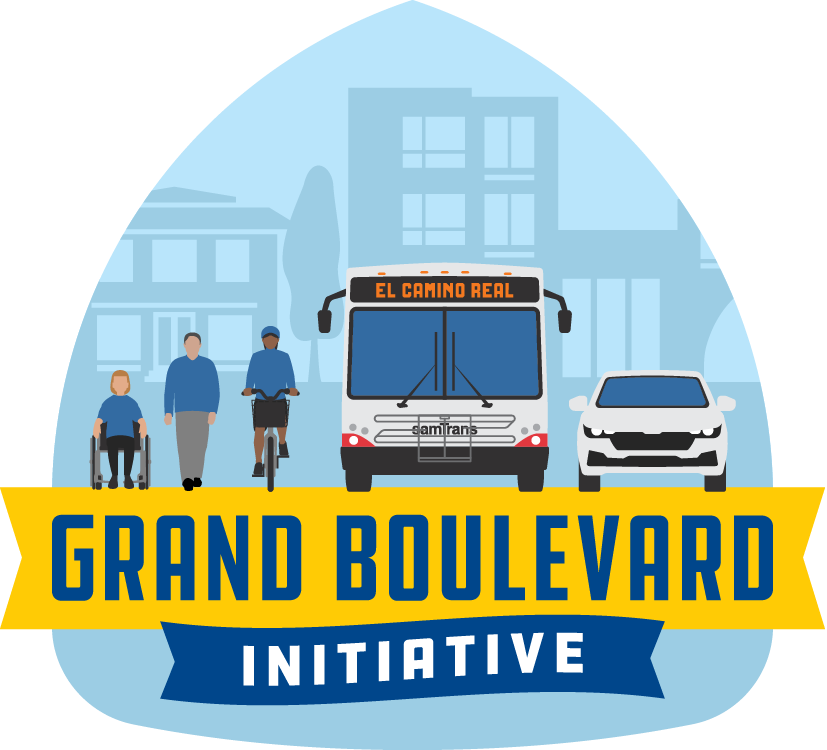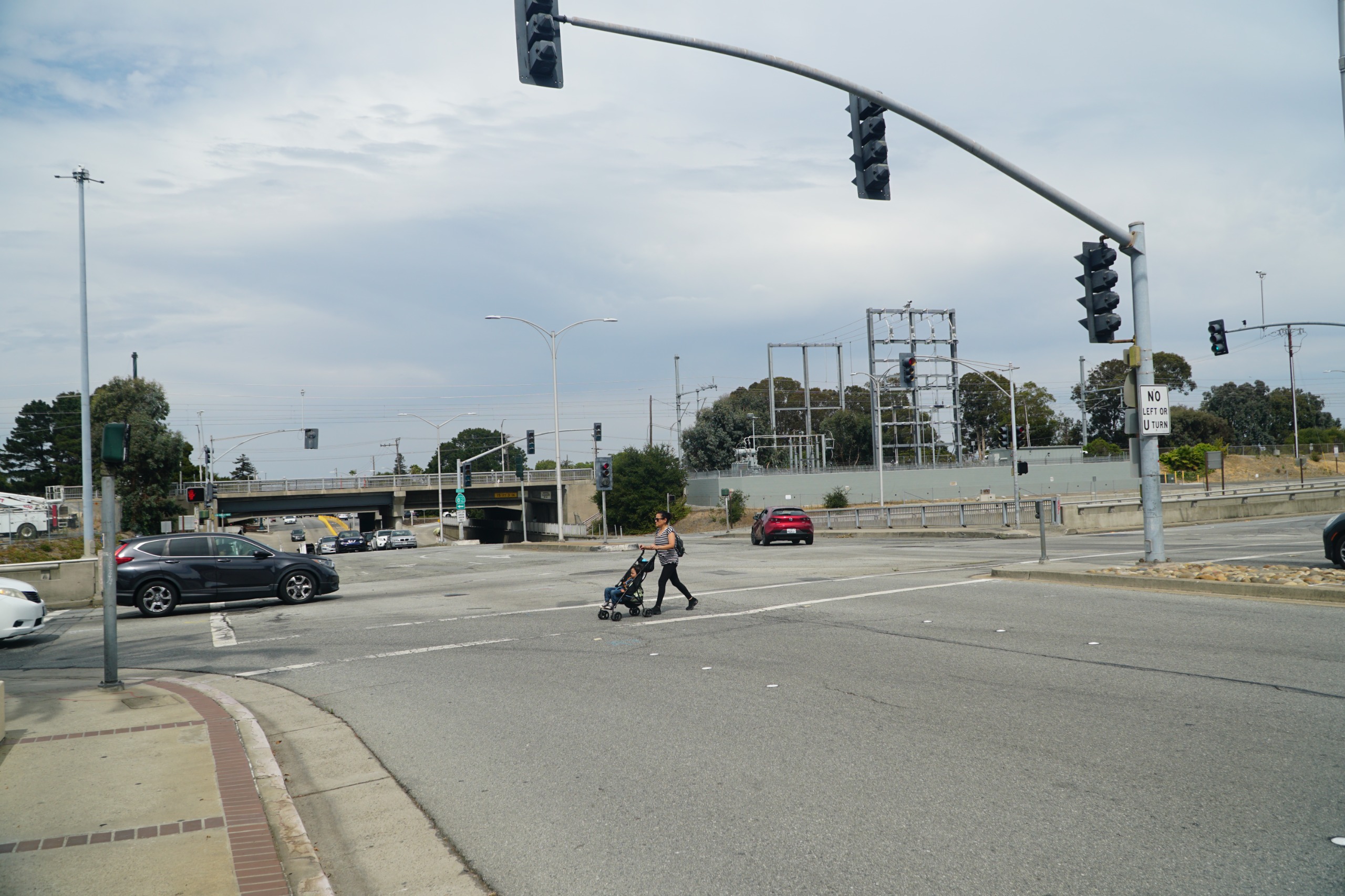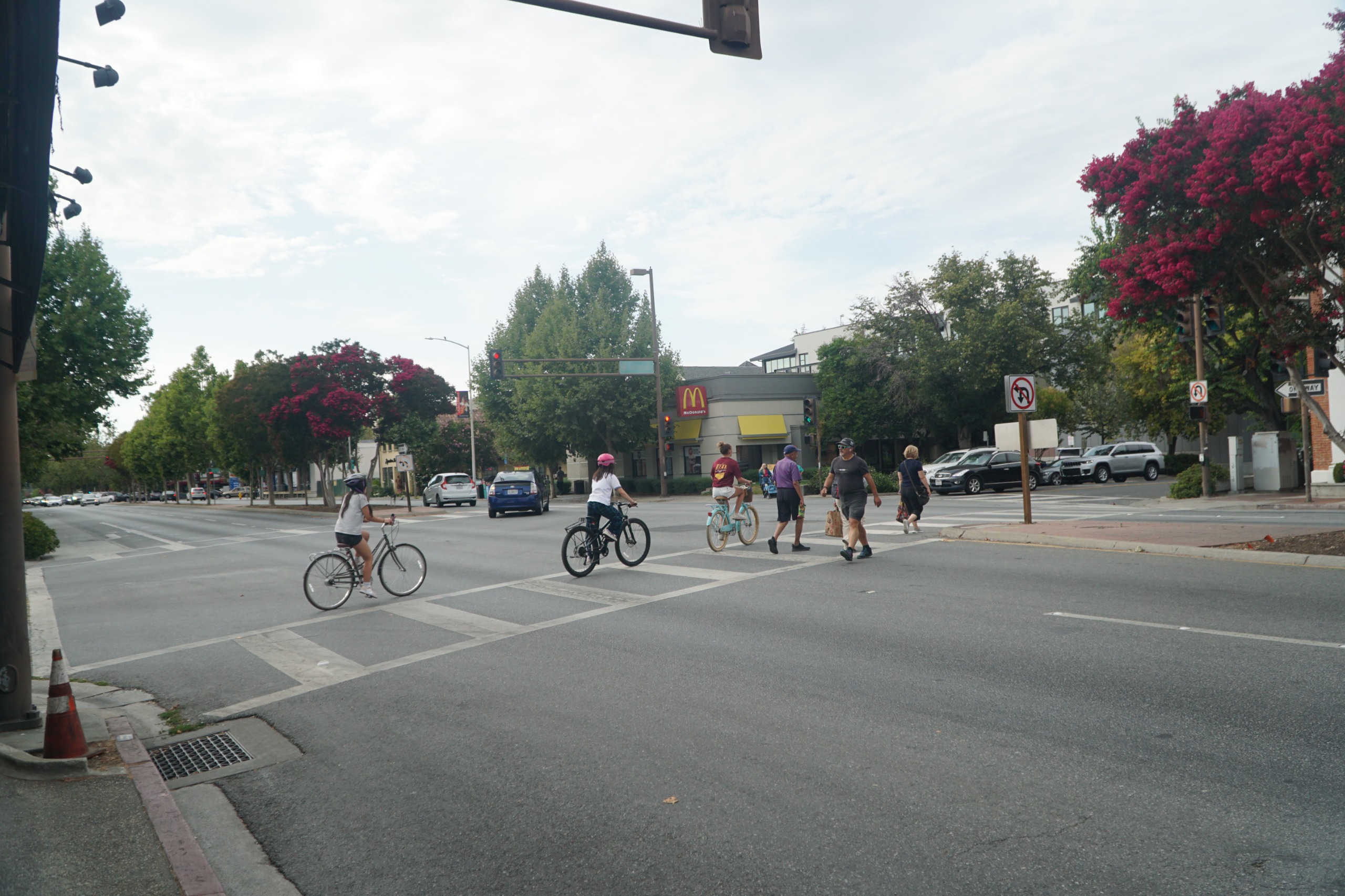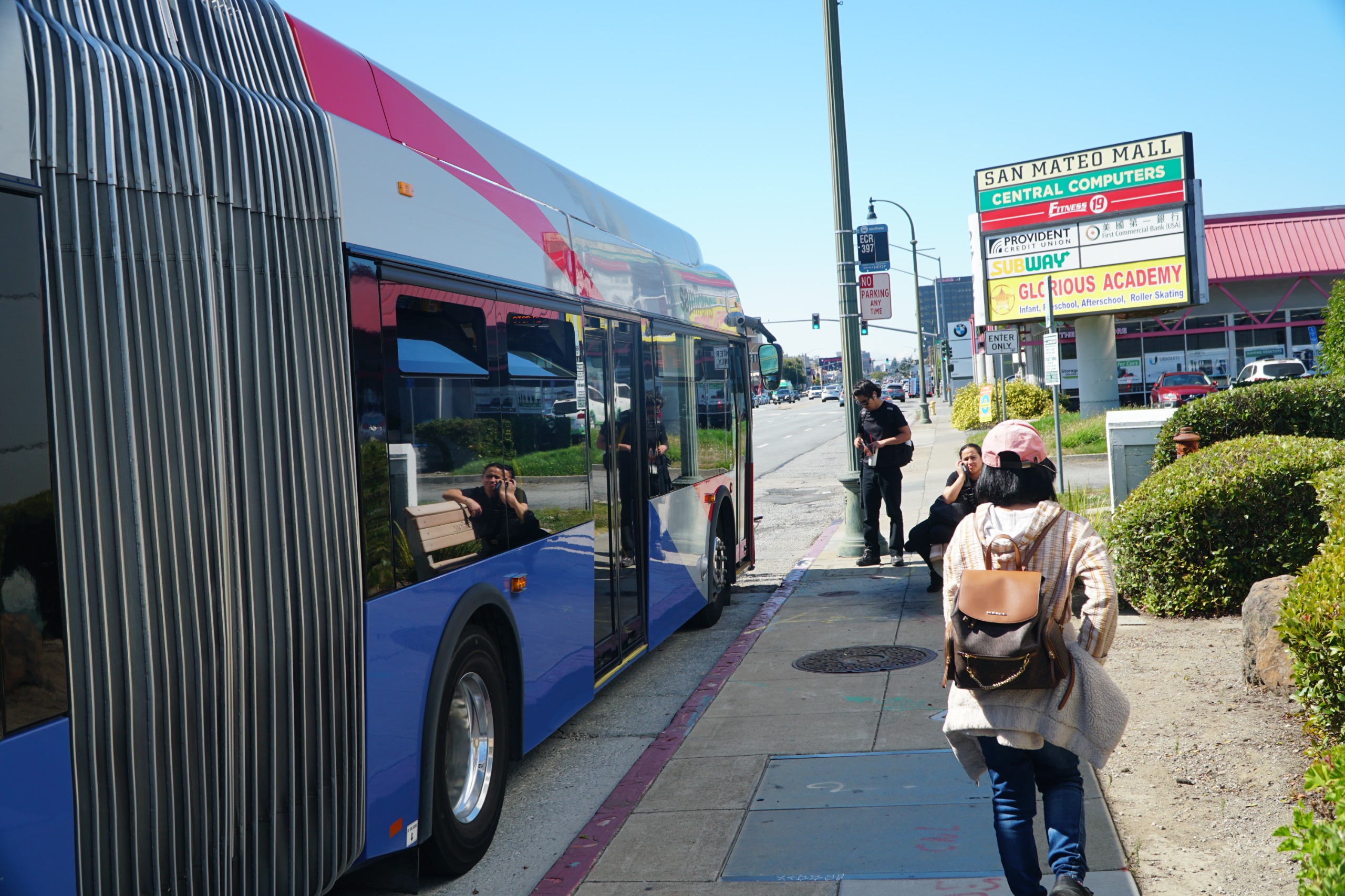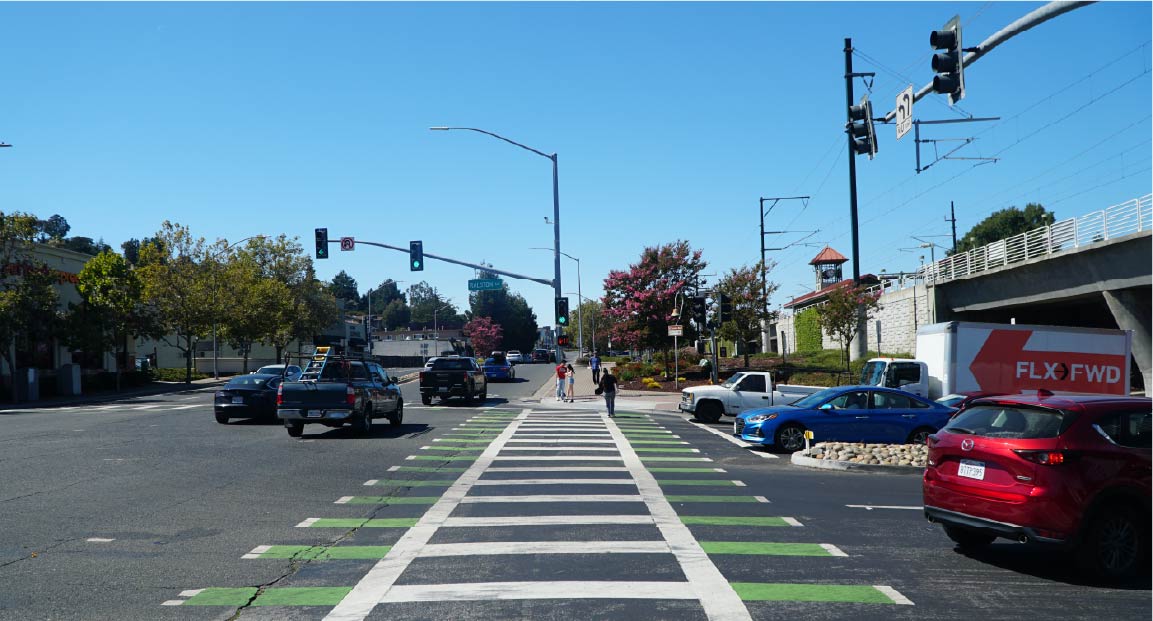
The Grand Boulevard Initiative Action Plan
The GBI Action Plan is currently available for public review until December 15th.
Do you have any comments on the GBI Action Plan?
Please provide any comments you have regarding the GBI Action Plan below. (max 140 characters).
About the Grand Boulevard Initiative
SamTrans is leading the Grand Boulevard Initiative (GBI), a corridor-wide effort to convert El Camino Real into a complete street. GBI coordinates local transportation planning efforts along El Camino Real, bringing together cities, countywide agencies, Caltrans, advocates, and business groups.
What is the GBI Action Plan?
The GBI Action Plan is a planning document that evaluates corridor-wide needs, establishes a cohesive vision, and builds momentum toward implementation. It serves as a precursor to beginning a countywide Caltrans project development process.
The Action Plan is organized around a corridor-wide vision statement and three key goals that will lay the foundation for a grand boulevard connecting communities in San Mateo County.
Problem Statements and Goals
The GBI Task Force and Working Group developed the following problem statements to summarize the existing needs on El Camino Real. Corresponding goals have been developed to provide a roadmap for addressing these needs.
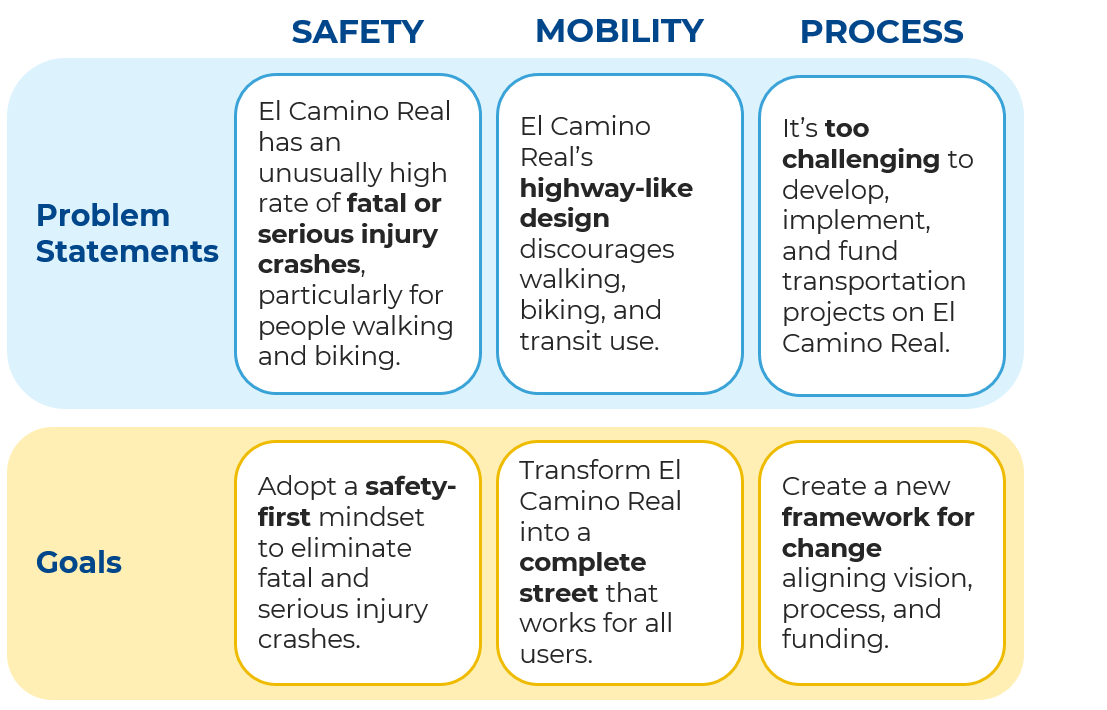
What are the existing corridor-wide needs?
SamTrans and cities in San Mateo County have identified safety, mobility, and process corridor-wide needs on El Camino Real that can be addressed through the Action Plan.
El Camino Real has one of the highest rates of fatalities and serious injuries in the region over a 20-year period (from 2002-2022). High vehicle speeds, gaps in sidewalks and crosswalks, and an absence of separated bike lanes all contribute to a high rate of collisions on El Camino Real.
Walking:
El Camino Real is uncomfortable for people walking. Challenges include long crossing distances, unmarked crosswalks and crosswalks without a pedestrian signal, sidewalk gaps, and poor lighting. These conditions can discourage people from walking on El Camino Real.
Biking:
Existing bike facilities on El Camino Real are very limited, with less than ¼ mile of separated bicycle lanes that are comfortable for users of all ages and abilities.
Transit:
Buses on El Camino Real encounter various sources of delay. Buses are forced to weave in and out of traffic on El Camino Real to drop-off and pick-up passengers which can delay the bus by 15-20 minutes, resulting in slow bus speeds and unreliable bus schedules.
Advancing transportation projects on El Camino Real requires collaboration between cities, countywide and regional agencies, and Caltrans to identify improvements, navigate project approvals, and secure funding.
Meaningful progress to address safety and mobility challenges on El Camino Real will require developing a shared vision for the corridor and collaborating to move projects forwards.
The draft corridor-wide vision statement builds on these problem statements and goals.
Draft Vision Statement
What other goals do you have for El Camino Real?
We've identified safety, mobility, and process as key needs on El Camino Real and formed three goals to address these challenges: safety-first mindset, complete street approach, and a framework for change. What other needs and/or goals do you have for El Camino Real? (max 140 characters).
Anything else you would like to share about El Camino Real?
What "grand" ideas do you have for El Camino Real? What would success on this project look like for you? We want to create a street that works for everyone. (max 140 characters).
What comes after the Action Plan?
Once the Action Plan is complete, SamTrans will lead the first phase of a coordinated Caltrans project development process, called a Project Initiation Document (PID), for all of El Camino Real in San Mateo County. The PID will define the purpose and need for transportation improvements to the corridor as well as establish potential design alternatives.
